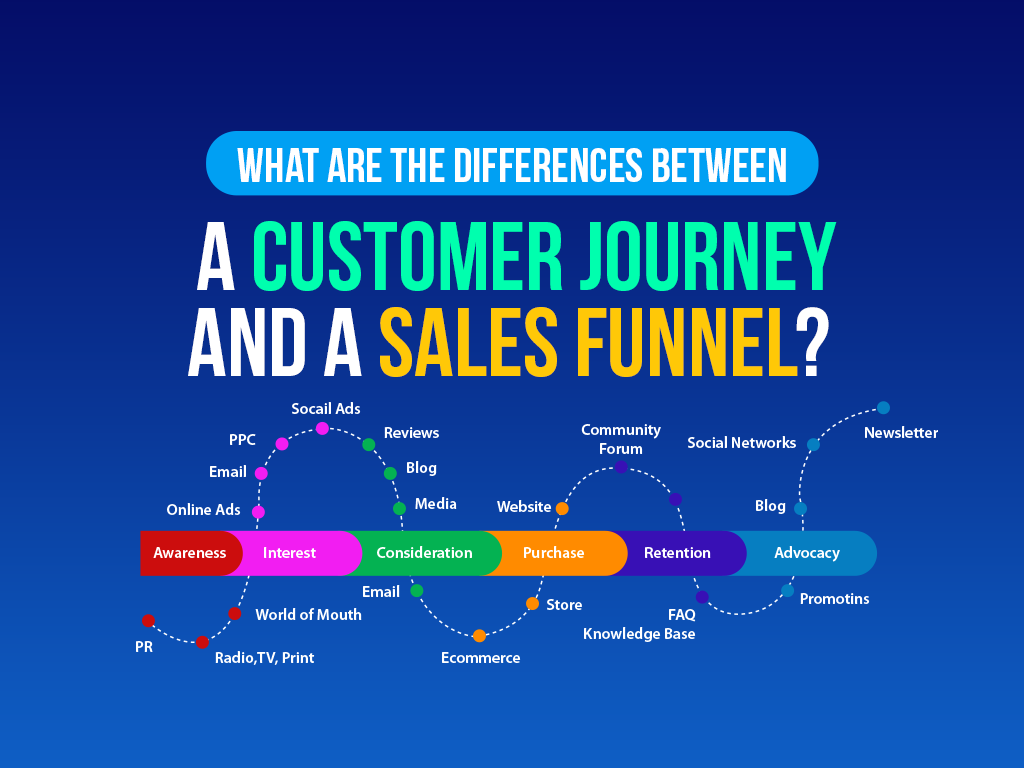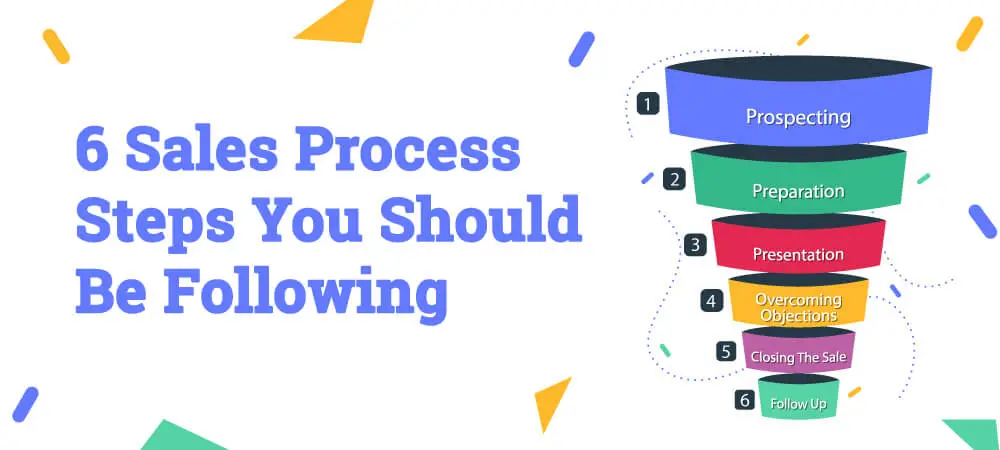The sales journey can easily be a complicated, multi-stage process, requiring careful navigation to win at the game. From lead generation to close, every step is indispensable for the end-to-end sales journey. It needs understanding each phase from prospecting to followup in order to achieve sales targets and encourage long-term customer relationships. In this post, you will learn the most essential components a sales cycle involves and some expert tips on how to navigate effectively from lead to close. Stay tuned for some expert advice to optimize your sales process to drive business growth.
1. Effective communication and collaboration constitute an effective sales journey.
2. The proper qualification of leads is necessary to ensure that the sales journey succeeds.
3. Technology Support helps manage sales pipeline efficiently.
4. Close sales deals in a tailor-made fashion only.
5. Organize and keep track of leads so one does not lose deals.
6. Consistent follow-up leads the way to getting in the markets for customers.
Lead Generation
Identify and Target the Ideal Customer Profile
It all starts with an ideal customer profile. A close examination of customers you have done business with will reveal common characteristics in demographics, behaviors, and pain points. In this way, you then find your targets to place marketing and sales efforts toward attracting those most likely to become a valuable lead.
Effective strategies for attracting potential leads
Lead generation is a strategic process. This creates relevant and compelling content appealing to the needs and interests of your target audience. Promotion of your brand and bringing leads closer can be done through social media and e-mails, SEO, or other internet-based marketing techniques. This has been done through the provision of adequate information that creates trust and credibility with your leads.
Lead Qualification and Nurturing
Lead qualification and nurturing provide many of the most important aspects of the sales process. This is actually where prospects are evaluated and nurtured to get further closer to purchasing a product or service. There is much importance in understanding the quality and fit of the lead for your product or service before proceeding into the sales journey. For more information on closing techniques, you may need to check this Closing Techniques in Sales: The Ultimate Guide for B2B.
Lead Quality and Fit Assessment
Success in selling demands assessing the quality and fit of every lead. The sales professional earns effectiveness by focusing on and directing their efforts when considering the interest, budget, authority, and need for your product or service that each lead possesses. Knowledge of the pain points and motivations of the lead will take you further up the sales pipeline.
Lead Nurturing and Relationship-Building Techniques
Nurturing leads and building relationships with potential customers form a crucial part of the sales process. This involves connecting with leads through personalized communication, providing value by delivering educational content, and following up incessantly. Sales professionals attend to their needs and concerns and eventually establish trust and credibility in converting leads into loyal customers.
Each lead differs based on preference, and so does his buying journey. It will enable the salesperson to establish meaningful connections that are more likely to convert because a long-term customer relationship is developed through understanding challenges and offering solutions, which meet a need at a specific time.
The Art of the Pitch and Negotiation
This is why mastering the art of pitching and negotiation will be essential in successfully completing the end-to-end sales journey. For an in-depth guide on the whole sales process, be sure to visit Lead to Close: Master the 6-Step Sales Process.
Creating an Effective Value Proposition
It all begins with a good, well-articulated compelling value proposition. What it does is spell out for the prospect why your product or service is worthwhile. This is then what captures a customer’s attention, sets you apart from another competitor, and leads you to identify where you truly add value.
Negotiation Best Practices and Closing Techniques
Mastery of negotiation best practices and closing techniques forms one of the most pivotal elements towards a deal closed. This will include active listening to understand the customer’s needs and objections as well as addressing these smartly toward reaching a mutually convenient position. Employing proven negotiation strategies and providing high-innovative, customer-centric solutions makes your case towards closing that deal much stronger.
Effective negotiation practices include trust building, confidence exuding, knowing how to walk away, among others, which can be mixed with a compelling value proposition and deep insight into the needs of the prospect to navigate the negotiation process even better and close sales.
Post-Sales Activity and Relationship Management
Delivery on Promises and Effective Customer Satisfaction
Activities after a sale must be controlled to deliver promises made during the sales process and to ensure the customer is satisfied. This could include commitments through delivery times and product quality, in addition to above-and-beyond customer service. Keeping open lines of communications and responding quickly to problems will help gain trust and loyalty of customers.
Keeping Repetitive Business and Referrals
Relationship management doesn’t end the sale; it is the means to ensure that there is continuity in a relationship with customers by encouraging repeat business and referrals. Through direct communication with customers and special offers, businesses keep their brand foremost in customers’ minds and incentivize them to return and recommend the product or service to other people.
Further to stimulate repeat business and word-of-mouth referrals, a business can use loyalty programs, customer appreciation events, or referral incentives. In addition to making customers feel that their business is valued, this strategy will create loyalty and advocacy towards a brand.
Final Words
It would seem that going from lead to close is a pretty elaborate process, and there really shouldn’t be some last-minute and unorganized planning if you are going to come out on top. Proper lead generation strategies and interactions that are customized to the particular leads, as well as efficient application of technology aimed at making this simplified and structured sales process, allow businesses to basically guide prospects through the sales pipeline to a very successful close. Communication is at the heart of any step of the journey, and so, the customer-centric approach forms its basis to create a long-term relationship with the customers. Managing to master all such steps in the sales journey can help companies grow more revenue and get places as a trusted partner in customers’ books.
Also read
The sales journey can easily be a complicated, multi-stage process, requiring careful navigation to win at the game. From lead generation to close, every step is indispensable for the end-to-end sales journey. It needs understanding each phase from prospecting to followup in order to achieve sales targets and encourage long-term customer relationships. In this post, you will learn the most essential components a sales cycle involves and some expert tips on how to navigate effectively from lead to close. Stay tuned for some expert advice to optimize your sales process to drive business growth.
1. Effective communication and collaboration constitute an effective sales journey.
2. The proper qualification of leads is necessary to ensure that the sales journey succeeds.
3. Technology Support helps manage sales pipeline efficiently.
4. Close sales deals in a tailor-made fashion only.
5. Organize and keep track of leads so one does not lose deals.
6. Consistent follow-up leads the way to getting in the markets for customers.
Lead Generation
Identify and Target the Ideal Customer Profile
It all starts with an ideal customer profile. A close examination of customers you have done business with will reveal common characteristics in demographics, behaviors, and pain points. In this way, you then find your targets to place marketing and sales efforts toward attracting those most likely to become a valuable lead.
Effective strategies for attracting potential leads
Lead generation is a strategic process. This creates relevant and compelling content appealing to the needs and interests of your target audience. Promotion of your brand and bringing leads closer can be done through social media and e-mails, SEO, or other internet-based marketing techniques. This has been done through the provision of adequate information that creates trust and credibility with your leads.
Lead Qualification and Nurturing
Lead qualification and nurturing provide many of the most important aspects of the sales process. This is actually where prospects are evaluated and nurtured to get further closer to purchasing a product or service. There is much importance in understanding the quality and fit of the lead for your product or service before proceeding into the sales journey. For more information on closing techniques, you may need to check this Closing Techniques in Sales: The Ultimate Guide for B2B.
Lead Quality and Fit Assessment
Success in selling demands assessing the quality and fit of every lead. The sales professional earns effectiveness by focusing on and directing their efforts when considering the interest, budget, authority, and need for your product or service that each lead possesses. Knowledge of the pain points and motivations of the lead will take you further up the sales pipeline.
Lead Nurturing and Relationship-Building Techniques
Nurturing leads and building relationships with potential customers form a crucial part of the sales process. This involves connecting with leads through personalized communication, providing value by delivering educational content, and following up incessantly. Sales professionals attend to their needs and concerns and eventually establish trust and credibility in converting leads into loyal customers.
Each lead differs based on preference, and so does his buying journey. It will enable the salesperson to establish meaningful connections that are more likely to convert because a long-term customer relationship is developed through understanding challenges and offering solutions, which meet a need at a specific time.
The Art of the Pitch and Negotiation
This is why mastering the art of pitching and negotiation will be essential in successfully completing the end-to-end sales journey. For an in-depth guide on the whole sales process, be sure to visit Lead to Close: Master the 6-Step Sales Process.
Creating an Effective Value Proposition
It all begins with a good, well-articulated compelling value proposition. What it does is spell out for the prospect why your product or service is worthwhile. This is then what captures a customer’s attention, sets you apart from another competitor, and leads you to identify where you truly add value.
Negotiation Best Practices and Closing Techniques
Mastery of negotiation best practices and closing techniques forms one of the most pivotal elements towards a deal closed. This will include active listening to understand the customer’s needs and objections as well as addressing these smartly toward reaching a mutually convenient position. Employing proven negotiation strategies and providing high-innovative, customer-centric solutions makes your case towards closing that deal much stronger.
Effective negotiation practices include trust building, confidence exuding, knowing how to walk away, among others, which can be mixed with a compelling value proposition and deep insight into the needs of the prospect to navigate the negotiation process even better and close sales.
Post-Sales Activity and Relationship Management
Delivery on Promises and Effective Customer Satisfaction
Activities after a sale must be controlled to deliver promises made during the sales process and to ensure the customer is satisfied. This could include commitments through delivery times and product quality, in addition to above-and-beyond customer service. Keeping open lines of communications and responding quickly to problems will help gain trust and loyalty of customers.
Keeping Repetitive Business and Referrals
Relationship management doesn’t end the sale; it is the means to ensure that there is continuity in a relationship with customers by encouraging repeat business and referrals. Through direct communication with customers and special offers, businesses keep their brand foremost in customers’ minds and incentivize them to return and recommend the product or service to other people.
Further to stimulate repeat business and word-of-mouth referrals, a business can use loyalty programs, customer appreciation events, or referral incentives. In addition to making customers feel that their business is valued, this strategy will create loyalty and advocacy towards a brand.
Final Words
It would seem that going from lead to close is a pretty elaborate process, and there really shouldn’t be some last-minute and unorganized planning if you are going to come out on top. Proper lead generation strategies and interactions that are customized to the particular leads, as well as efficient application of technology aimed at making this simplified and structured sales process, allow businesses to basically guide prospects through the sales pipeline to a very successful close. Communication is at the heart of any step of the journey, and so, the customer-centric approach forms its basis to create a long-term relationship with the customers. Managing to master all such steps in the sales journey can help companies grow more revenue and get places as a trusted partner in customers’ books.
Also read
The sales journey can easily be a complicated, multi-stage process, requiring careful navigation to win at the game. From lead generation to close, every step is indispensable for the end-to-end sales journey. It needs understanding each phase from prospecting to followup in order to achieve sales targets and encourage long-term customer relationships. In this post, you will learn the most essential components a sales cycle involves and some expert tips on how to navigate effectively from lead to close. Stay tuned for some expert advice to optimize your sales process to drive business growth.
1. Effective communication and collaboration constitute an effective sales journey.
2. The proper qualification of leads is necessary to ensure that the sales journey succeeds.
3. Technology Support helps manage sales pipeline efficiently.
4. Close sales deals in a tailor-made fashion only.
5. Organize and keep track of leads so one does not lose deals.
6. Consistent follow-up leads the way to getting in the markets for customers.
Lead Generation
Identify and Target the Ideal Customer Profile
It all starts with an ideal customer profile. A close examination of customers you have done business with will reveal common characteristics in demographics, behaviors, and pain points. In this way, you then find your targets to place marketing and sales efforts toward attracting those most likely to become a valuable lead.
Effective strategies for attracting potential leads
Lead generation is a strategic process. This creates relevant and compelling content appealing to the needs and interests of your target audience. Promotion of your brand and bringing leads closer can be done through social media and e-mails, SEO, or other internet-based marketing techniques. This has been done through the provision of adequate information that creates trust and credibility with your leads.
Lead Qualification and Nurturing
Lead qualification and nurturing provide many of the most important aspects of the sales process. This is actually where prospects are evaluated and nurtured to get further closer to purchasing a product or service. There is much importance in understanding the quality and fit of the lead for your product or service before proceeding into the sales journey. For more information on closing techniques, you may need to check this Closing Techniques in Sales: The Ultimate Guide for B2B.
Lead Quality and Fit Assessment
Success in selling demands assessing the quality and fit of every lead. The sales professional earns effectiveness by focusing on and directing their efforts when considering the interest, budget, authority, and need for your product or service that each lead possesses. Knowledge of the pain points and motivations of the lead will take you further up the sales pipeline.
Lead Nurturing and Relationship-Building Techniques
Nurturing leads and building relationships with potential customers form a crucial part of the sales process. This involves connecting with leads through personalized communication, providing value by delivering educational content, and following up incessantly. Sales professionals attend to their needs and concerns and eventually establish trust and credibility in converting leads into loyal customers.
Each lead differs based on preference, and so does his buying journey. It will enable the salesperson to establish meaningful connections that are more likely to convert because a long-term customer relationship is developed through understanding challenges and offering solutions, which meet a need at a specific time.
The Art of the Pitch and Negotiation
This is why mastering the art of pitching and negotiation will be essential in successfully completing the end-to-end sales journey. For an in-depth guide on the whole sales process, be sure to visit Lead to Close: Master the 6-Step Sales Process.
Creating an Effective Value Proposition
It all begins with a good, well-articulated compelling value proposition. What it does is spell out for the prospect why your product or service is worthwhile. This is then what captures a customer’s attention, sets you apart from another competitor, and leads you to identify where you truly add value.
Negotiation Best Practices and Closing Techniques
Mastery of negotiation best practices and closing techniques forms one of the most pivotal elements towards a deal closed. This will include active listening to understand the customer’s needs and objections as well as addressing these smartly toward reaching a mutually convenient position. Employing proven negotiation strategies and providing high-innovative, customer-centric solutions makes your case towards closing that deal much stronger.
Effective negotiation practices include trust building, confidence exuding, knowing how to walk away, among others, which can be mixed with a compelling value proposition and deep insight into the needs of the prospect to navigate the negotiation process even better and close sales.
Post-Sales Activity and Relationship Management
Delivery on Promises and Effective Customer Satisfaction
Activities after a sale must be controlled to deliver promises made during the sales process and to ensure the customer is satisfied. This could include commitments through delivery times and product quality, in addition to above-and-beyond customer service. Keeping open lines of communications and responding quickly to problems will help gain trust and loyalty of customers.
Keeping Repetitive Business and Referrals
Relationship management doesn’t end the sale; it is the means to ensure that there is continuity in a relationship with customers by encouraging repeat business and referrals. Through direct communication with customers and special offers, businesses keep their brand foremost in customers’ minds and incentivize them to return and recommend the product or service to other people.
Further to stimulate repeat business and word-of-mouth referrals, a business can use loyalty programs, customer appreciation events, or referral incentives. In addition to making customers feel that their business is valued, this strategy will create loyalty and advocacy towards a brand.
Final Words
It would seem that going from lead to close is a pretty elaborate process, and there really shouldn’t be some last-minute and unorganized planning if you are going to come out on top. Proper lead generation strategies and interactions that are customized to the particular leads, as well as efficient application of technology aimed at making this simplified and structured sales process, allow businesses to basically guide prospects through the sales pipeline to a very successful close. Communication is at the heart of any step of the journey, and so, the customer-centric approach forms its basis to create a long-term relationship with the customers. Managing to master all such steps in the sales journey can help companies grow more revenue and get places as a trusted partner in customers’ books.
End to End Sales Journey
End to End Sales Journey
Also read Sales Automation best practices





